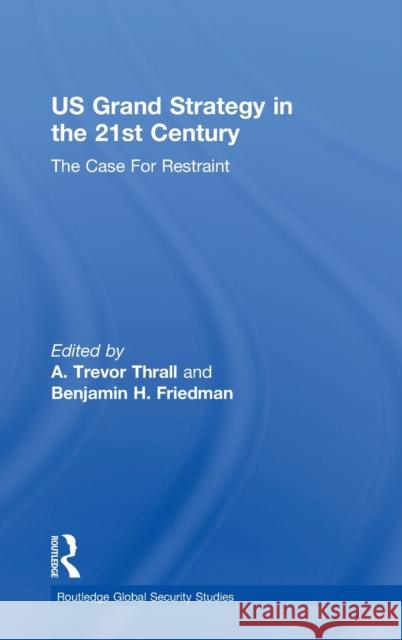Us Grand Strategy in the 21st Century: The Case for Restraint » książka
Us Grand Strategy in the 21st Century: The Case for Restraint
ISBN-13: 9781138084537 / Angielski / Twarda / 2018 / 288 str.
Us Grand Strategy in the 21st Century: The Case for Restraint
ISBN-13: 9781138084537 / Angielski / Twarda / 2018 / 288 str.
(netto: 670,84 VAT: 5%)
Najniższa cena z 30 dni: 654,86
ok. 22 dni roboczych
Dostawa w 2026 r.
Darmowa dostawa!
This book challenges the dominant strategic culture and makes the case for restraint in US grand strategy in the 21st century. Grand strategy, meaning a state's theory about how it can achieve national security for itself, is illusive. That's particularly true in the United States, where the division of federal power and the lack of direct security threats limit consensus about how to manage danger. But a grand strategy consensus arrived in Washington in the past two decades around "primacy" or "liberal hegemony." Both Democratic and Republican leaders see US military power as indispensable to stability everywhere. US military alliances, they agree, secure the peace between foreign powers, and armed interventions are needed to occasionally halt civil conflict abroad. Partisanship masks this consensus. Republicans bitterly attack the Obama administration, but largely support doing more of the same - more energetic efforts to aid Syrian rebels, more troops in Afghanistan for longer, more Pentagon spending, and more vigorous efforts to demonstrate US fidelity to deter Putin through NATO. The consensus is unearned, according to the authors in this volume, who set out the case for restraint. At its core, a grand strategy of restraint rests on three assumptions. First, the United States enjoys a robust state of national security thanks to its geographic, economic, and military advantages. Second, military interventions and long-term military alliances tend to cause more problems than they solve. Third, the United States would derive significant economic, political, and security benefits from a more restrained foreign policy, involving fewer military commitments and wars. Further, a grand strategy of restraint aligns with the fundamental values of the classical liberal tradition of the nation's founding. Accordingly, roughly the first half of the book focuses on challenging the assumptions of liberal hegemony or primacy. The second half explores the historical and political roots of US grand strategies and considers how to implement restraint in US foreign policy today. This book will be of much interest to students of US foreign policy, grand strategy, national security and International Relations in general.











